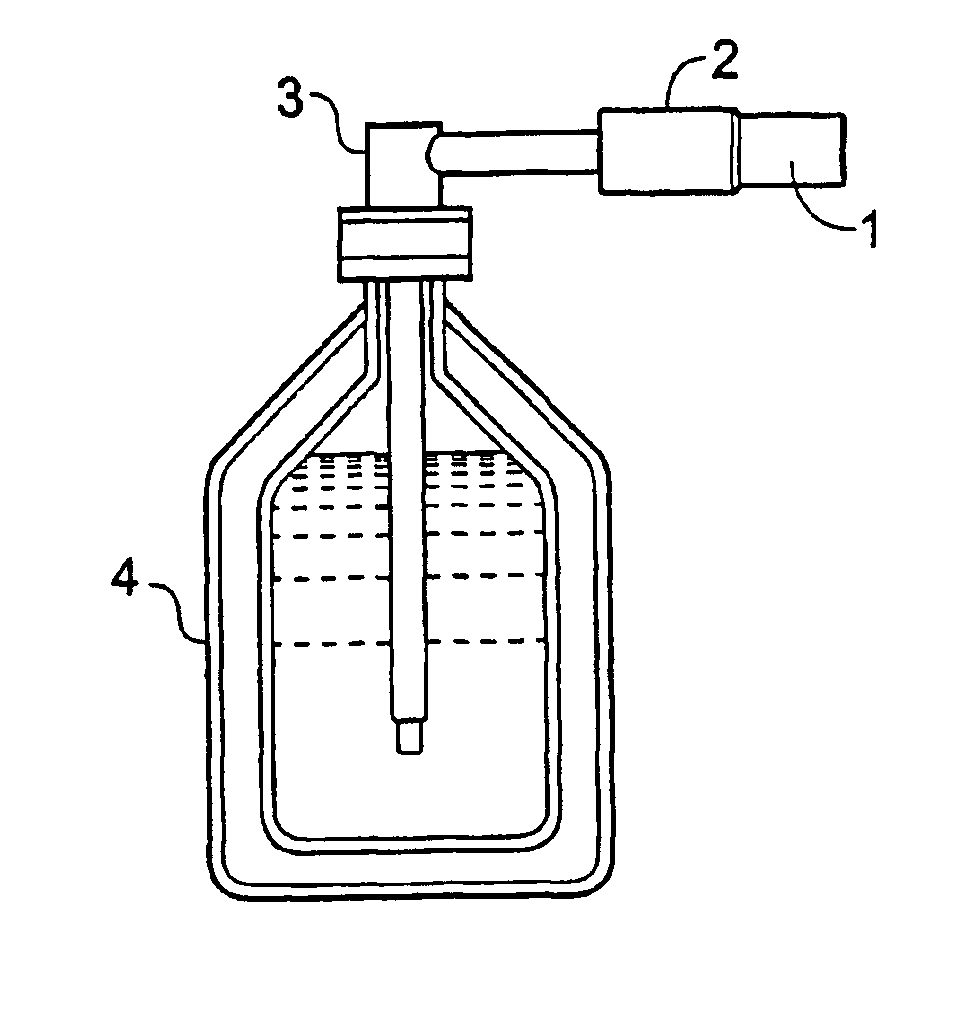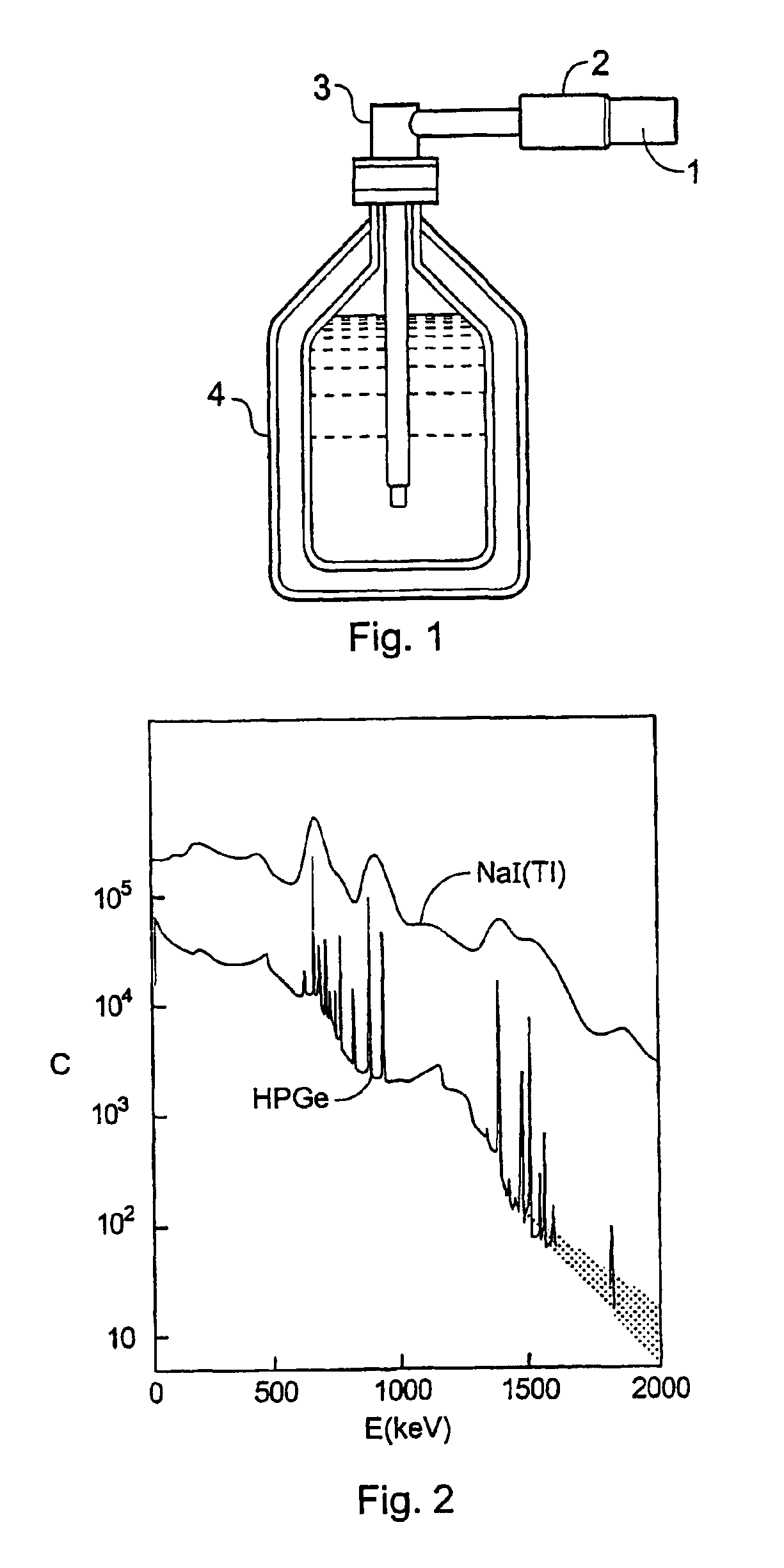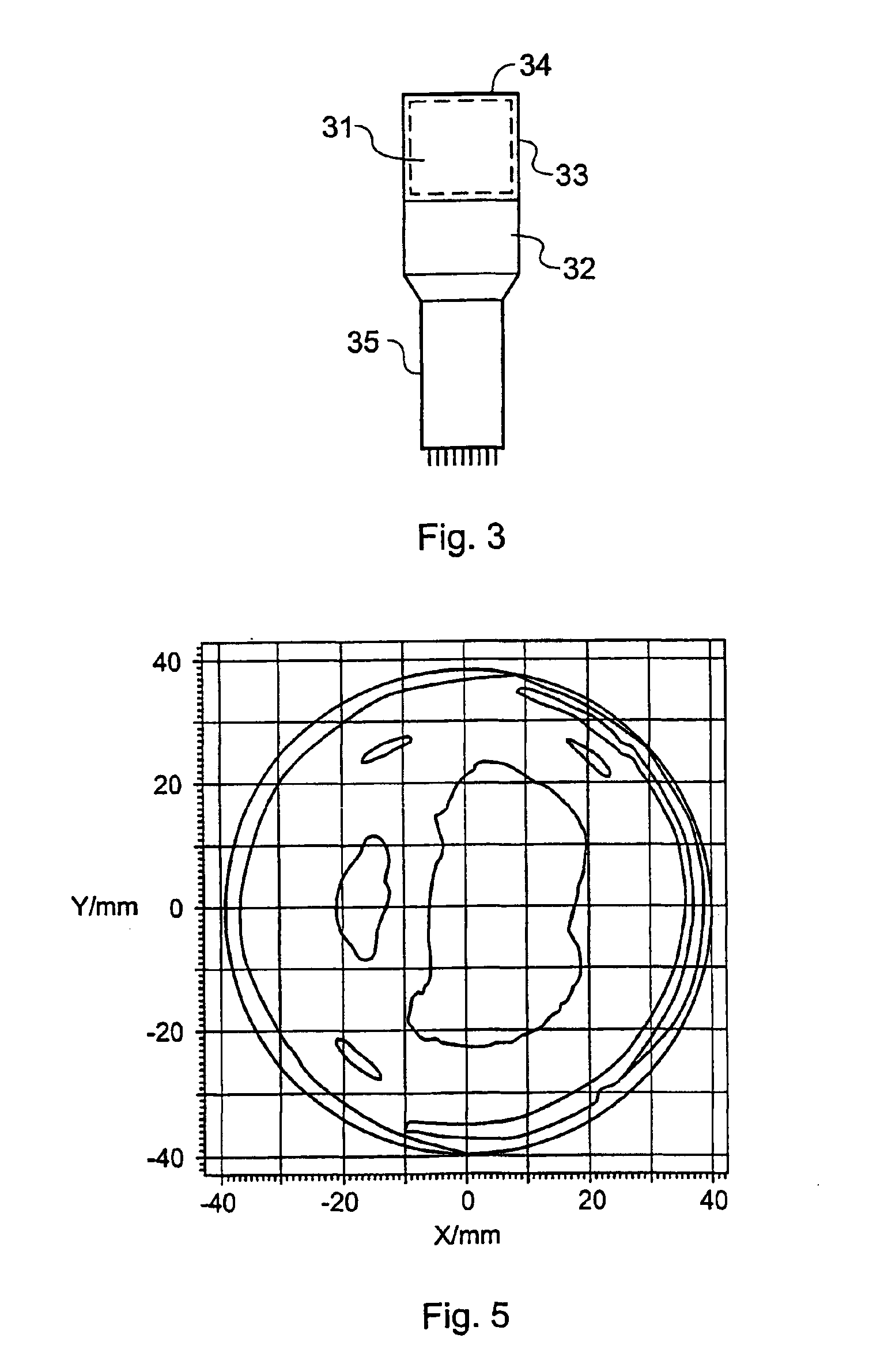Gamma-ray spectrometry
a gamma-ray spectrometer and gamma-ray technology, applied in the field of gamma-ray spectrometers, can solve the problems of high noise, low sensitivity of hpge detectors, and high cost of germanium crystal fabrication, and achieve uniform sensitivity across the sensitive area, improve the uniformity of response, and improve the effect of uniformity
- Summary
- Abstract
- Description
- Claims
- Application Information
AI Technical Summary
Benefits of technology
Problems solved by technology
Method used
Image
Examples
first embodiment
1. First Embodiment
[0120]The analysis outlined above highlighted the potential benefits of minimising the variances in the light-collection efficiency and spatial response of the photodetector use. Both of these effects can be minimised by using a high quality PIN photodiode in place of a photo-multiplier. Although PIN photodiodes have a smaller sensitive area the that of the photo-multipliers used in current spectrometer designs, they have a very uniform response.
[0121]In order to minimise the variances in collecting the scintillation light at the photo-detector, a spherical scintillation crystal was chosen with a dimension that the area of the PIN diode would be typically only 1% of the surface area of the crystal. It was believed that, provided a high-reflectivity packing material selected, a sufficiently high light-collection efficiency would, nevertheless, be achieved. Simulations and measurements suggest that the ratio of the detector area to that of the surface area of the de...
second embodiment
2. Second Embodiment
[0135]A key advantage of the scintillation sphere spectrometer design of the first embodiment is its ability to minimise the variance in the light-collection efficiency when gamma rays interact in different regions of the crystal. This characteristic was also aided by the use of a photo-detector that has a very uniform spatial-response. The experience gained in the design, simulation and measurement of the performance of the scintillation sphere spectrometer devices, suggested the exploration of a simpler design based on the use of a prismatic detection crystal coupled to a similar, prismatic light-guide. This material will act as an efficient light-guide provided that its surface is highly reflective. The purpose of introducing this light guide was to ensure that the profile of the light-pool intensity incident upon the photo-multiplier was invariant with all the different possible locations for the interaction of gamma rays in the detection crystal. The additio...
third embodiment
3. Third Embodiment
[0152]The principles established during the development of both the scintillation sphere spectrometer and the scintillation prism spectrometer have also been applied to the design of new high-performance position-sensitive scintillation counters. These are arrays of miniature scintillation spectrometers each having a cross-sectional area of, for example, 3×3 mm which are viewed either by discrete PIN diodes or APDs, or a monolithic array of such photo-detectors. Alternatively, a position-sensitive photo-detector having a very uniform photo-cathode response such as a hybrid-photodiode (HPD) or an electron-bombarded charged coupled device (CCD), would provide a uniform spatial response.
[0153]In such an application, the variances in the light-collection efficiency can be reduced by making the reflectivity of the crystal surface is as high as possible. The variance can be further reduced by designing the scintillation crystals in such a way that their length is longer...
PUM
 Login to View More
Login to View More Abstract
Description
Claims
Application Information
 Login to View More
Login to View More - R&D
- Intellectual Property
- Life Sciences
- Materials
- Tech Scout
- Unparalleled Data Quality
- Higher Quality Content
- 60% Fewer Hallucinations
Browse by: Latest US Patents, China's latest patents, Technical Efficacy Thesaurus, Application Domain, Technology Topic, Popular Technical Reports.
© 2025 PatSnap. All rights reserved.Legal|Privacy policy|Modern Slavery Act Transparency Statement|Sitemap|About US| Contact US: help@patsnap.com



